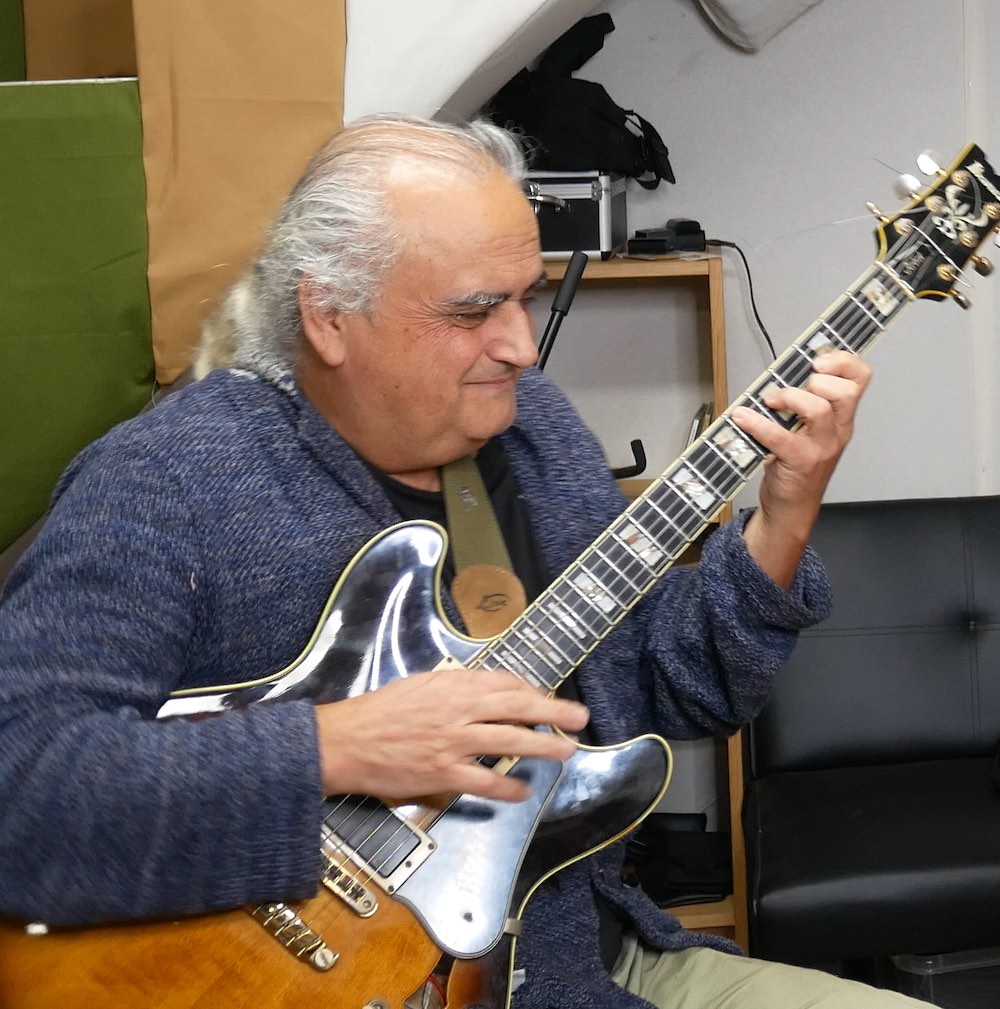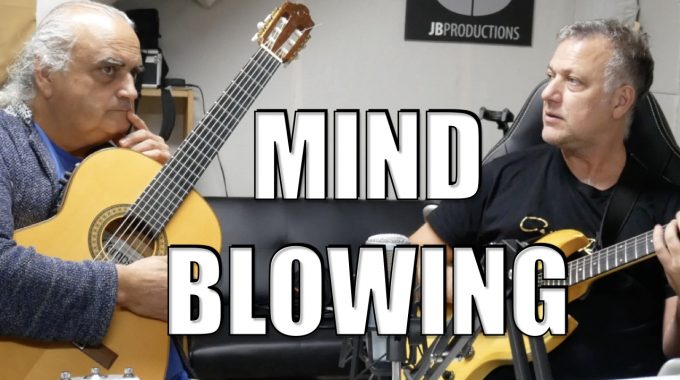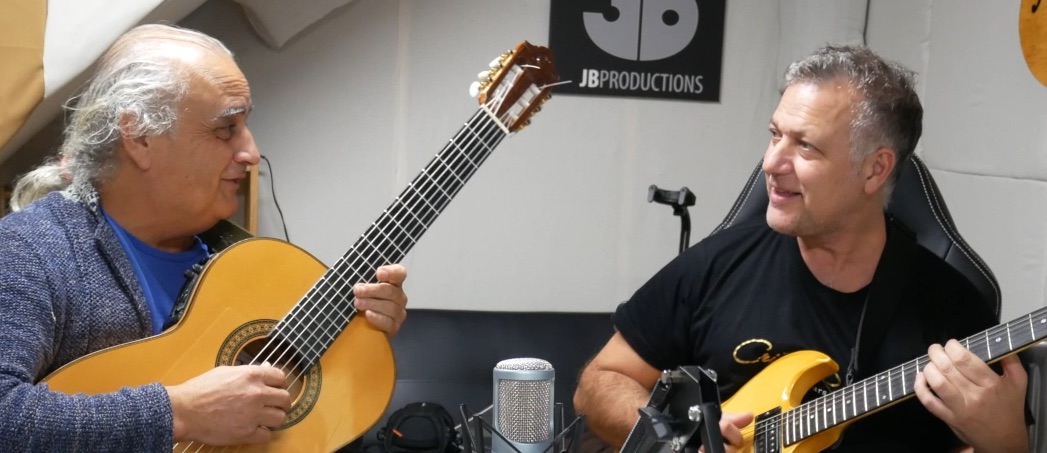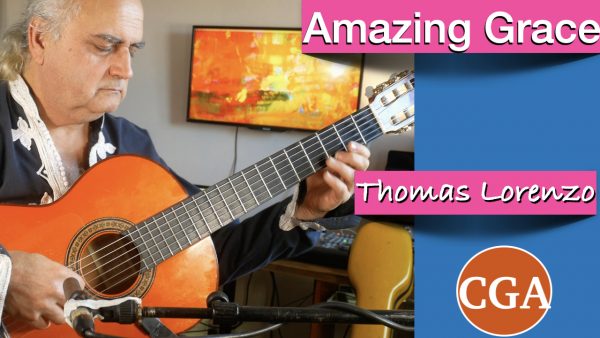Create the George Benson BLUES sound, transform any song with pentatonic scales or quickly dive into CONTEMPORARY Jazz.

How to Create the Blues Sound
What is Blues?
Muddy Water the Real Blues Sound
Blues is a musical language. The overall blues sound comes from imposing a set of notes, the blues scale, over chords that naturally are created with other scales.
Consider the blues sound as a cloud of notes, not related to the chords that hover over a moving chord progression. The more we move away from the initial tonal center the more blues we have to play to keep the listener focused on the blues sound.
For example in a G blues with the following chords:
G|G |G |G
C|C| G |G
D |C |G |G
If we play the natural sound of the chords which are defined by their mixolydian scales we get the following sound: Listen to my solo in the next video
If we play the blues scale and force it on top of all the chords and when we play the C and D chords we even force it more, as a consequence we then have the blues color perfectly defined.
Listen to this next video and notice how as Muddy Waters changes chords he maintains the listeners attention on the blues scale rather than on the chordal sound.
Can we combine mixolydian scales with the blues sound?
Yes and you must, as this creates more of a contrast and makes the music even more pleasing.
Listen to this next track Lucille from BB King and you will hear his sound, which is a mixture of the blues scale with the chordal sound. I adore this music production and it´s live feel.
Therefore the blues scale is not the chordal sound?
Yes when we play the blues scale the objective is not to define the chords but to create the hovering blues sound, the cloud, on top of them. However when we play the chordal notes with the mixolydian scales then we relax that blues cloud of sound and make it even more enjoyable.
How can I learn to do such?
First of all you need to memorize the blues sound, then afterwords memorize how to alter the blues sound with chordal notes.
For such I recommend memorizing 12 bars of the Muddy Water Mississippi Blues and 12 bars of the BB kings solo of the previous 2 video examples.
Then, it is up to you to extrapolate how they do it to start incorporating the sound into your playing. This will occur after a disciplined study or around 6 months, where you practice by breaking up the solos into sections and learn to use the phrases you love in your own solos.
After these 6 months you will start creating your own variations automatically.
Can I learn to do this with tabs?
Yes, but it is better to internalise the sound and make a sonic imprint in your aural perception. The more you separate visual perception from aural, the quicker you will learn.
As a consequence please transcribe by listening and figuring it out. If you have not done this before please refer to my LISP method in my beginners courses
Why are tabs not that useful?
Music is not a visual language but an aural language with the sole intention of expression of sincerity.
When you visualize the sound this will create a short circuit in your brain leading to uncomfortable music happenings.
In other words, play what you can hear and sing and do not think, as this stops the flow of creativity. You must use your thoughts only as the steering wheel of your playing. You steer in a direction and you must let go without thinking too much in what you are playing.
Should I learn licks?
Yes, please memorize them and use them if you like them. Personally I think they are a waste of time as when you really improvise you will never use them. It is better to memorize a full paragraph or section of a solo with a start and an ending.
Focus on your accompaniment skills
When you practice blues please spend as much time on your rhythm guitar as on your improvisation. This is crucial as the objective all of all music is to play with others and if you do not have a grasp of what it means to accompany you will not be able to play with others and your solos will be confusing as they relate to the accompaniment around you which is always evolving and moving as we are human beings.
Your chops are a combination of playing groove and improvising.
How should I practice then?
- Learn your tools: Scales, chords effectively.
- Memorize solos and use the new language effectively. (6 months)
- Memorize accompaniments and use the new language effectively. ( 6 months)
- As part of your daily practice play groove for 12 bars and then play whatever you want that you can hear for 12 bars and repeat, alternating between accompaniment and solos, and please do not stop in between sections.
- Create your own phrases and accompaniments.
- Keep your playing with no tempo to the bare minimum.
How long should my practice session be for?
Play with expression, with maximum expression, avoid thinking and when you get tired take a break.
Always be kind to yourself and do not judge with good or bad what you’re playing. Relate to wow, this feels good and this feels better and remember, everything you do is ok.
Please call me and join our guitar lessons either at our Guitar School in Sydney or your Guitar School in Wollongong,


